Best usb flash drive Australia
Which is the best usb flash drive in 2025?
VIEW OFFERBest of 2025: Find the right usb flash drive in Australia
Backing up files or taking them on the go is easier than ever thanks to a great USB flash drive. The best USB flash drives offer incredible memory capacities while transferring data quickly and maintaining lasting durability, all for a reasonable price, which is certainly worth the investment for most. However, with so many products available and a few things to consider when buying a USB flash drive, finding the best model for your needs is not always straight forward. Check out this guide for our expert tips to help find the best USB flash drive.
The 10 best usb flash drives in Australia (February 2025)
The bestseller list compares usb flash drives from multiple brands
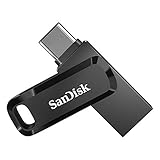
- Backup: Automatic backups with simple plug-in.
- Storage: Frees up space for more photos.
- Compatibility: Works with both USB Type-C and Type-A devices.
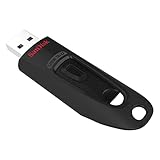
- Capacity: Available in 16 GB, 32 GB, 64 GB, 128 GB, and 256 GB.
- Security: Password protects and encrypts private files with SanDisk SecureAccess.
- Speed: Transfer a full-length movie in less than 40 seconds.

- Trust: Reliable due to Samsung’s leadership in flash memory.
- Durability: Sturdy metal body designed for data protection.
- Speed: Read speeds up to 300 MB/s with USB 3.1.

- Security: 128-bit AES encryption for password protection.
- Durability: Sleek, durable metal casing.
- Speed: Up to 150MB/s transfer rate.
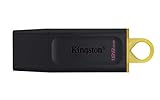
- Durability: Practical cap for USB plug protection.
- Capacity: Storage options up to 256GB for all your files.
- Performance: Fast USB 3.2 Gen 1 for quick access and transfers.

- Compatibility: Works with Windows, Linux, and Mac OSX.
- Design: Retractable to protect USB connector.
- Capacity: 32GB of storage sufficient for various files.
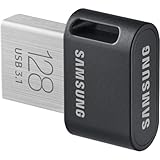
- Reliability: Secure files with Samsung’s trusted flash memory leadership.
- Speed: Read speeds up to 400 MB/s; USB 3.1 ensures quick transfers.
- Capacity: Expand storage with extra space; leave it in devices risk-free.

- Backup: Automatic photo backup via SanDisk Memory Zone app.
- Storage: Expands smartphone space, allowing you to take more photos.
- Compatibility: Works with USB Type-C and Type-A devices for versatile usage.
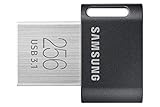
- Compactness: Exceptionally compact with a key ring to prevent loss.
- Durability: Water, shock, magnet, temperature, x-ray proof, with a 5-year limited warranty.
- Speed: Redefine everyday file transfers with speeds up to 300MB/s.

- Backup: Automatically backs up photos with SanDisk Memory Zone app.
- Storage: Frees up space on USB Type-C smartphones.
- Compatibility: Works with both USB Type-C and USB Type-A devices.
Affiliate link: We are a participant of the Amazon Associates Program. If you buy a product through this link we might earn a small commission from Amazon at no extra charge for you. As an Amazon Associate we earn from qualifying purchases.
- Read the definitive usb flash drive buying guide
- View the usb flash drive picks and see how they rank in the top list
usb flash drive buying guide
Do you want to buy a good usb flash drive? This is all you need to know.
A short explanation: What are usb flash drives?
A USB flash drive is a portable storage device that uses flash memory to store and transfer various types of files like photos, videos, music, documents etc. It plugs into the USB port in a computer and is compatible with both Windows and Mac PCs, although they are quite small and more robust that other memory devices like external hard drives.
What are the benefits of good usb flash drives?
They are incredibly useful for storing and transporting files. For most, a USB flash drive is used to store files temporarily, with the device then used to transfer the files to another computer or device. For example, saving a word document to the USB drive from a computer at work and then plugging the USB driver into a laptop to access the file. It is called a flash drive because the memory can be accessed in a flash. This means you can save or access data very quickly.
How to choose the best usb flash drive in 2025?
Whether for personal, domestic, or business use, choosing the best USB flash drive can be quite difficult. It’s a fairly niche product that not everyone is familiar with, making it easy enough to feel overwhelmed by the choices available. Here are some things to consider to help you choose a great USB flash drive:
- Capacity: Perhaps the most important thing to consider when buying a USB flash drive, it is vital as it determines how many files you can store on the drive. Think about the types of files you are storing to help determine the capacity you will need. For instance, if you just need one to store some word documents or PDFs, then a smaller capacity should be fine.
- File Size: The type of files you are storing will determine the capacity you need, as larger files will obviously require more space. For instance, if you are storing photographs, videos, multimedia presentations, or lots of documents, then you will need a USB with enough capacity.
- Transfer Speeds: The best USB flash drives tend to offer the fastest transfer speeds, so be sure to keep a lookout for this. The faster the transfer speed, the quicker you can store your files onto the drive. Remember: The best USB with a high transfer rate will also be much quicker at transferring data, but they will also cost a bit more.
Which types of usb flash drives are available to buy in Australia?
There are countless types of USB flash drives out there, any of which may be ideal for your requirements. Here are some of the most popular types of USBs currently available:
- Standard USB Flash Drive: Ranges in weight from around 1 to 2 TB. This is the best USB flash drive to go with if you just need it to store files, software, videos or other data. They are the most widely used USB drive and remain so cheap that you can get some great multi-pack deals.
- USB Flash Drive for OTG: One of the best USB flash drives for mobile devices, you can connect these USBs to your smartphone or tablet, allowing you to transfer data between mobiles and computers. You’ll need a micro-USB as found on most Android devices, and it’s highly worthwhile for transferring backups and other large datasets.
- Compact USB Flash Drivers: USB flash drives continue to get smaller and smaller, with some now being the size of a connective port. While much smaller, they still offer a great memory size, although they are more prone to misplacement and arguably easier to steal.
